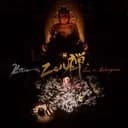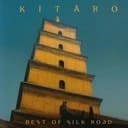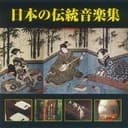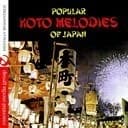Traditional Japanese Heritage and Historical Context
The hirajoshi scale represents a cornerstone of Japanese musical tradition, with documented usage spanning centuries across gagaku (imperial court music), Buddhist temple ceremonies, and regional folk traditions throughout Japan's cultural landscape. The name "hirajoshi" translates to "flat tuning" or "level foundation," describing its stable, grounded character within the sophisticated pentatonic modal system developed by Japanese court musicians and Buddhist monks. This scale structure emerged from tuning theories fundamentally distinct from Western equal temperament and diatonic harmony, reflecting unique aesthetic principles rooted in zen philosophy and seasonal awareness. Traditional instruments—particularly the 13-string koto, shakuhachi bamboo flute, and shamisen three-string lute—utilize hirajoshi tuning for both sacred spiritual music and secular entertainment across diverse social contexts and performance settings. The interval pattern (2-1-4-1-4 semitones) creates harmonic relationships dramatically different from A Major or A Natural Minor, producing the instantly recognizable "Japanese sound" that transcends cultural and linguistic boundaries. Contemporary traditional music schools throughout Japan continue teaching hirajoshi as essential repertoire, while modern artists adapt it for anime soundtracks, video game scores, meditation music, and fusion projects that honor centuries-old traditions within contemporary production contexts and global musical conversations.
Distinctive Sonic Character and Emotional Expression
A Hirajoshi delivers a wistful, introspective quality characterized by its minor third (C natural) and distinctive intervallic gaps that create the characteristic "gapped" aesthetic central to Japanese pentatonic scales and traditional performance practices. The large leap from B to E (a perfect fourth) produces space, contemplation, and aesthetic restraint fundamental to Japanese musical philosophy, evoking zen rock gardens, tea ceremonies, mountain shrines, and seasonal transformations with remarkable emotional immediacy. This interval structure naturally suggests images of cherry blossoms, traditional architecture, misty landscapes, and philosophical introspection—making it essential for film composers establishing Asian cultural settings and authentic atmospheric contexts. The absence of semitone motion (except between C and B) eliminates Western leading-tone tension, allowing melodic phrases to float without gravitational pull toward tonic resolution typical of European harmonic practice and functional chord progressions. Compared to the brighter A Yo scale or the darker, more dramatic A Iwato scale, A Hirajoshi occupies balanced emotional territory—melancholic yet serene, introspective yet universally accessible to diverse listeners and cultural backgrounds. Musicians describe its character as "quietly beautiful," "peacefully nostalgic," and "contemplatively meditative"—perfect for ambient soundscapes, wellness music, mindfulness applications, and compositional moments requiring authentic Japanese cultural resonance without aggressive emotional expression or dramatic intensity.
Contemporary Applications Across Modern Musical Genres
A Hirajoshi appears extensively in anime soundtrack production, where composers leverage its distinctive pentatonic structure to instantly establish Japanese cultural identity—Studio Ghibli productions and acclaimed anime series frequently employ hirajoshi-based melodic themes for scenes requiring emotional depth and cultural authenticity. Video game composers working on titles set in feudal Japan or Asian-inspired fantasy worlds (including critically acclaimed games like "Ghost of Tsushima," "Sekiro: Shadows Die Twice," and numerous Japanese RPGs) rely on this scale for atmospheric composition that immediately communicates cultural setting and emotional tone. The wellness and meditation music industry extensively uses A Hirajoshi for its inherently calming pentatonic simplicity, creating peaceful soundscapes without dissonance or complex harmonic progressions that might disturb meditative states or mindfulness practices. Jazz musicians exploring modal improvisation incorporate A Hirajoshi for exotic color and fresh melodic vocabulary, often contrasting it with A Blues or A Dorian sections in fusion compositions and world music explorations. Electronic music producers use hirajoshi in lo-fi hip-hop beats, chillwave, and ambient electronica, where its five-note structure provides melodic interest without harmonic complexity or dissonant tension. Guitarists particularly appreciate A Hirajoshi because the open A string provides a natural drone foundation and the scale's notes create accessible, visually clear fretboard patterns across multiple positions, making it ideal for both beginners exploring Japanese music and advanced players developing authentic improvisational vocabulary.
Comparative Analysis Within Japanese and Western Pentatonic Systems
Understanding A Hirajoshi's position within the broader Japanese pentatonic family clarifies its distinctive qualities and traditional applications across diverse musical contexts. The A In scale shares contemplative qualities but employs different intervals producing distinct melodic possibilities and cultural associations, while A Iwato creates darker, more mysterious atmospheres suitable for different emotional contexts and dramatic storytelling situations. The A Kumoi scale offers another Japanese pentatonic alternative with its own characteristic flavor and traditional performance practices. Transposing to different keys, musicians can explore C Hirajoshi for brighter orchestral settings or alternative tonal centers. Comparing hirajoshi to Western pentatonics reveals fundamental structural and cultural differences: while A Minor Pentatonic (A-C-D-E-G) emphasizes blues-rock vocabulary and Western harmonic implications rooted in African-American musical traditions, hirajoshi's B and F natural create entirely different melodic possibilities and immediate cultural associations with Japanese music heritage. The major third from C to E and the unusual F to A leap produce the scale's signature Japanese quality and characteristic sound profile. Understanding relationships to A Major and A Natural Minor helps Western musicians contextualize hirajoshi within familiar tonal frameworks while respecting its distinct cultural origins and aesthetic principles developed through centuries of Japanese musical evolution.
Effective Practice Strategies and Musical Development
Begin learning A Hirajoshi by slowly playing its five notes (A-B-C-E-F) while listening to traditional Japanese music featuring koto or shakuhachi—this contextual immersion dramatically accelerates authentic phrasing, ornamentation, and stylistic internalization beyond simple technical note memorization. Practice ascending and descending patterns, emphasizing the characteristic interval leaps, particularly the perfect fourth from B to E that creates the scale's distinctive gapped quality and authentic Japanese character. Guitarists benefit tremendously from the open A string drone possibilities—explore multiple fretboard positions discovering visually clear, memorable patterns that facilitate both practice efficiency and performance confidence. Keyboardists can note that four of the five notes (A, B, C, E, F) appear as white keys on the piano, making initial visualization and muscle memory development particularly accessible for students transitioning from Western repertoire. Improvise over an A minor drone or sustained A power chord, allowing the scale's notes to float without Western harmonic progression constraints or expected chord changes typical of popular music structures. Transcribe traditional Japanese melodies like "Sakura Sakura" (often performed in hirajoshi-related tunings) to understand authentic melodic phrasing, dynamics, articulation, and the critical importance of silence (ma) in Japanese musical aesthetics and compositional philosophy. Compare A Hirajoshi directly with A Minor Pentatonic to hear exactly how substituting B and F for D and G transforms cultural identity, emotional character, and melodic possibilities. Compose minimalist pieces using exclusively hirajoshi notes, experimenting with sparse textures, sustained tones, and negative space typical of Japanese compositional approaches and traditional aesthetic values. Study contemporary applications in anime soundtracks (works by composers like Joe Hisaishi and Yoko Kanno), video games, and world fusion recordings to understand how hirajoshi successfully adapts to modern production contexts while maintaining authentic character, cultural resonance, and emotional integrity.





